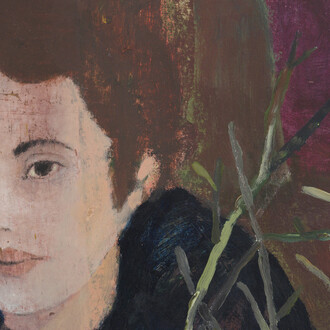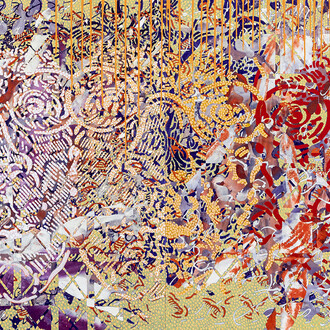Galerie Chantal Crousel is pleased to announce Vienna-based artist Heimo Zobernig’s fourth solo exhibition at the gallery.
Heimo Zobernig has been working in sculpture, painting, video, and performance since the 1980s, constantly questioning two fundamentals of the XXth century painting: the grid and the monochrome. Zobernig’s works offer a great variety of approaches with precision and details.
In 2013, while preparing his retrospective exhibition in the Palacio de Velázquez of the Museo Nacional Centro de Arte Reina Sofia in Madrid, he said: “Initially I painted wildly, in all imaginable styles, but later on I settled on radical geometric abstraction as my preferred technique. My sources back then often had nothing to do with art, which led to clear deviations from convention. Only gradually did I come to the monochrome, and from that point onward certain sources became apparent. In all the new techniques of young artists this astonishment with phenomenological painting is evident. In monochromes the ghosts and demons of the resistance movement emerge. The attempt at noncompliance, the continual failure to achieve the goal, is inscribed in the monochrome. No monochrome or empty picture that doesn’t reveal the traces of its own creation can continually deliver a historical statement.”
In the present exhibition, Heimo Zobernig has put together paintings originating from different series made between 2011 and 2017. All acrylics on canvas measure one by one meter.
Presented chronologically, the works show the evolution of Zobernig’s painting over the last six years, testimony of the evolution of his work and the hinge between each series. Each painting marks a transition with the following series of works - result of first considerations for further image motifs. The latter are related to art history devices and text templates from various sources.
The 2011 text paintings (blue, white or ochre), with their phantom-like effect in which the pure and minimal form is no longer the privilege of the language, gradually open onto the next series. The mixed up motifs, refer to the previous ones as well as to the following ones. The complex compositions are all combined with large color fields.
The pixelated surfaces of the 2014 paintings recall the pixels of low resolution 1980s video screens. The paintings are more about surface than about color. Through their texts, their digital palettes, their coarse pixellation, they affirm their relationship to the moving image in a way which is at once explicit and playfully elusive.
Finally, from the more formal grid paintings to the more gestural broken grids and winding paintings, the tape used is cut roughly by hand with words emerging such as: THIS.
















